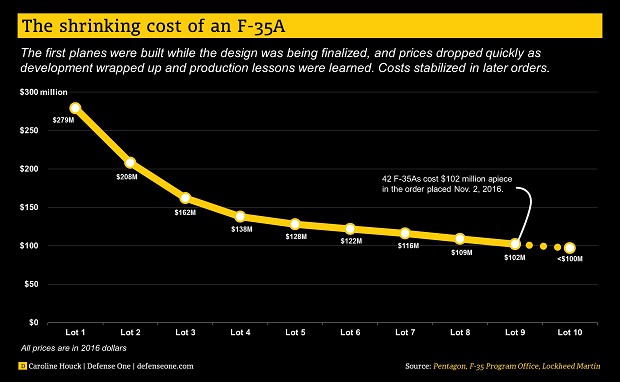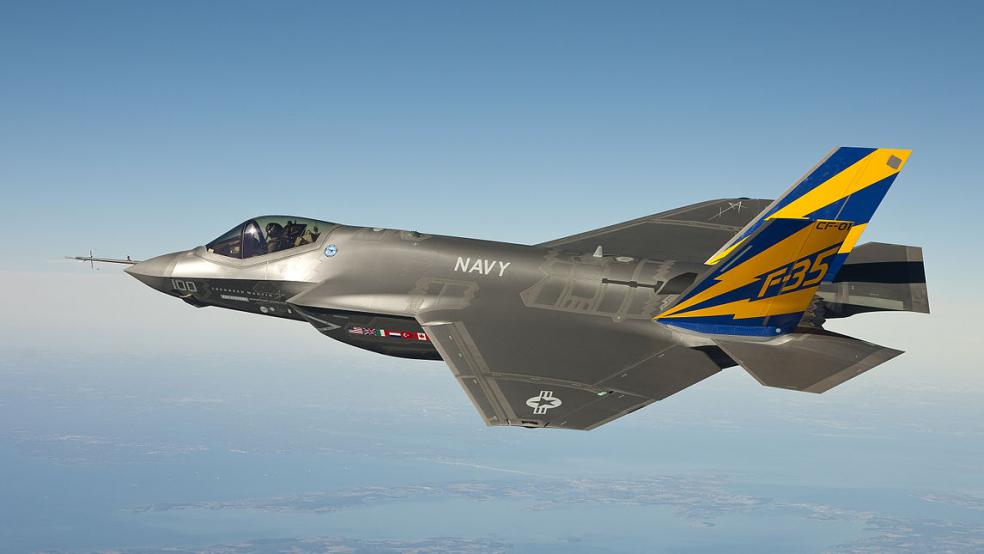In an interview with the Associated Press last Friday on the cusp of his first 100 days, President Trump did a lot of chest thumping about how much he saved the government on production of the F-35 Lightning II, also known as the Joint Strike Fighter.
Related: Is the F-35 Really Streaking by Its Troubled Past?
But according to the website Politifact, most of those savings were already on track. And now it looks like some of the savings may be illusory: A new General Accounting Office report says deficiencies in the delivered aircraft could cost more than $1.7 billion to repair. The GAO also cast serious doubt on the long-term affordability of the $400 billion program.
“I saved $725 million on the 90 planes. Just 90. Now there are 3,000 planes that are going to be ordered. On 90 planes I saved $725 million,” Trump told the AP. “Gen. Mattis, who had to sign the deal when it came to his office, said, ‘I've never seen anything like this in my life.’ We went from a company that wanted more money for the planes to a company that cut. And the reason they cut — same planes, same everything — was because of me. I mean, because that's what I do.”
Politifact says the President’s claims are “mostly false.”
“The savings on the F-35 fighter jets are real, but they were in the works long before Trump got involved,” Politifact said. “The Defense Department has a plan to acquire more than 2,400 F-35 aircraft from Lockheed Martin over 20 years, at a cost of around $379 billion. During his campaign and transition, Trump said publicly he wanted the costs to come down, and he held discussions with Lockheed Martin representatives.”
In fact, Trump has met several times with Lockheed Martin CEO Marillyn Hewson, who said late last month that his “emphasis and his engagement did absolutely make a difference.”
But in taking sole credit for the $728 million reduction announced on Feb. 3, Politifact said “Trump ignores that projected costs for the F-35 had been dropping for years, and the Pentagon had worked on lowering the price tag under past administrations.”

Perhaps more important than who was responsible for saving how much is the dire tone of the GAO report, which said “cost and affordability challenges remain,” in part because the F-35 – the Pentagon’s most costly and ambitious program – remains troubled.
Related: F-18 vs. F-35: Why Is Trump Talking Up the Super Hornet?
In the last year, the GAO said, unexpected changes in development and test plans had to be made “largely in response to a structural failure on a durability test aircraft, an engine failure, and software challenges. At the same time, engine reliability is poor and has a long way to go to meet program goals.”
Fixing already delivered aircraft could cost more than $1.7 billion, the report said. “This cost will likely increase, as more aircraft are purchased and delivered before development ends.”
Some 40 percent of developmental testing remains, the GAO said, and it expects the testing to be “very challenging.”
In the meantime, the report said, the Defense Department “plans to steeply increase its procurement funding requests over the next 5 years and projects that it will need between $14 and $15 billion annually for nearly a decade. It is unlikely that the program will be able to receive and sustain such a high and unprecedented level of funding over this extended period, especially with other significant fiscal demands weighing on the nation.”





